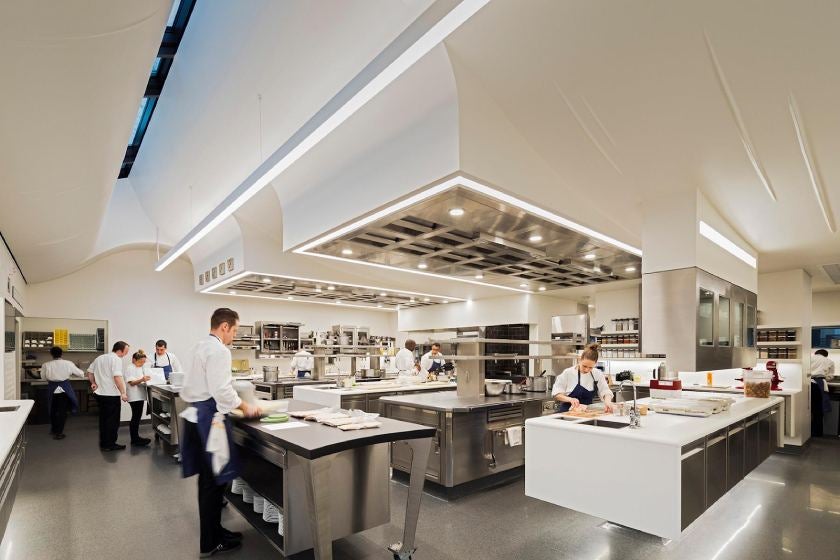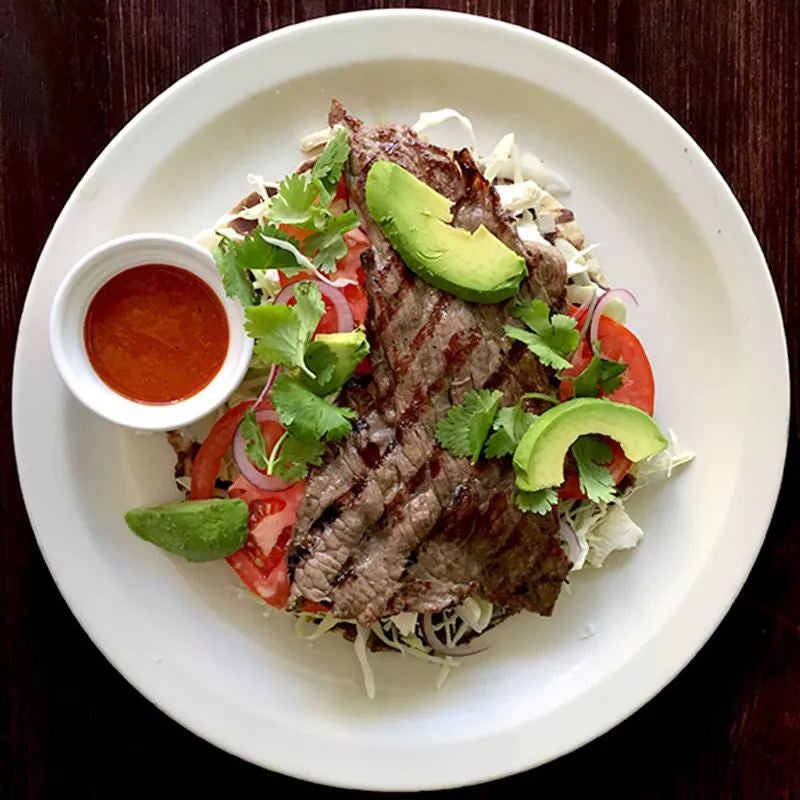Earning a Michelin star can mark the pinnacle of a restaurant’s success. These prestigious awards are renowned globally for their exclusivity and elusive nature. Out of millions of restaurants worldwide, only a couple thousand can call themselves Michelin-starred. So, how did a rating system once developed by a tire company to encourage car trips (and sell tires) come to symbolize the highest standards of restaurant quality? And how do you get a Michelin star? Let’s take a look.
Key Takeaways:
- Michelin awards all types of restaurants, not just fine dining restaurants.
- Local tourism boards can contact Michelin to encourage Michelin inspectors to visit their area, but this is not a guarantee that specific restaurants will receive specific awards.
- Food quality is the most important criterion for Michelin inspectors.
What Is a Michelin Star?
Michelin Stars are prestigious awards given to restaurants as a measure of culinary achievement. Since 1926, anonymous inspectors from the Michelin tire company have assigned these awards based on a strict set of criteria that the Michelin inspectors know and restaurant owners can only guess.
The Michelin Star system was originally developed to help travelers plan their trips by car (and hopefully sell a few tires as a result). Winning a star (or stars) is considered the pinnacle of culinary heights and a visible symbol of cooking mastery.
There are multiple levels of Michelin Star ratings. The original rating system based the awards on whether the restaurant is worth traveling for:
- One star: A very good restaurant, worth a stop
- Two stars: An excellent restaurant worth a detour
- Three stars: Exceptional, worth a special journey
Today, Michelin offers a bit more context to the ratings system, and includes a baseline, star-less, award. “Michelin Recommended.”
- A Michelin Recommended restaurant is similar to an honorable mention. They haven’t achieved a star yet, but deserve to be highlighted.
- One star is awarded to restaurants that use the best quality ingredients and demonstrate unique and brilliant standards.
- Two stars are awarded when you can see the chef’s personality shine through the dishes with refinement and inspiration.
- Three stars are the best award given to excellence and mastery, once the food has become an art form of expression and professionalism, worth a special journey.
Winning a star can propel chefs’ careers and earn their business recognition in the restaurant industry. Many people believe that Michelin stars are reserved for fine dining restaurants. But Tim Ho Wan, a dim sum restaurant in Hong Kong, won a Michelin star award and became known as the most affordable Michelin-starred restaurant, with prices starting under $10.
Since 1997, Michelin has awarded the Bib Gourmand to acknowledge restaurants that offer exceptional cooking at a value price. In 2020, Michelin began awarding Green Stars to reward sustainability and environmentalism in the restaurant industry. Green Stars are only awarded to restaurants that have already received a Michelin star.
Why Earning a Michelin Star Is Important
Earning a star puts restaurants on the map. Stars boost a restaurant’s status and often create famous restaurants and chefs overnight. Reservations and revenue skyrocket for Michelin-starred restaurants, spurred by the free advertising you get from media attention. It’s also generally easier to retain experienced staff when your restaurant has stars beside its name.
Michelin-rated chef Joel Robuchon once told Food & Wine magazine, “With one Michelin star, you get about 20 percent more business. With two stars, you do about 40 percent more business, and with three stars, you’ll do about 100 percent more business. So from a business point … you can see the influence of the Michelin guide.”
Michelin Stars can create TV stars too; Gordon Ramsay, Jean Georges Vongerichten, and Thomas Keller started their television careers after they won the highest 3-star rating awards.
Michelin Star Drawbacks
Earning Michelin stars also comes with challenges. Many restaurateurs find the pressure to maintain Michelin status overwhelming. Michelin accolades bring increased expectations from guests and higher operating costs from building owners and food purveyors who may feel that your newly famous restaurant has money to burn.
Some chefs complain that keeping the Star is stressful and demanding. Several restaurant owners and chefs have even renounced their stars to return to simpler cooking styles. Marco Pierre White famously “gave back” his Michelin stars claiming that working to retain them created stress and limited his creativity.
How to Get a Michelin Star
The route to obtaining a star is famously vague and has been mostly a mystery for years. But there are a few steps you can take to increase your chances of earning your first star or three.
1. Get Recommended
In a Michelin Guide interview, an anonymous Michelin Inspector said, “Any restaurant can ask us to consider them for inclusion in the Michelin Guide, and we love receiving recommendations from our readers too.” You can recommend your favorite restaurant (or even suggest your own restaurant) via the contact form on the Michelin Guide website.
2. Operate in a Michelin-rated Location
Not all cities or countries are rated by Michelin. Currently, Michelin inspectors have awarded stars in New York, Chicago, Los Angeles, San Francisco, and the states of Florida, Georgia, and Washington, D.C. In 2024, Michelin added the state of Colorado, rewarding restaurants in Denver, Boulder, and Aspen.
Michelin contenders must be visited multiple times by multiple Michelin inspectors before awards are decided. If you aren’t located in a place that is already reviewed by Michelin, it can take some time to get your restaurant seen.
3. Get Your Local Tourism Board Involved
If there isn’t a current Michelin guide in your location, you can ask your local tourism board to apply to be visited by the Michelin Guide. As reported by the New York Times, getting Michelin to agree to review a new city or state typically comes with a fee to the guide to cover the costs of expanding their operation in a new market. For example, in recent years, restaurant communities in Florida and Colorado combined their resources to attract Michelin inspectors to their markets.
Michelin inspectors are full-time employees of the Michelin Guide, and most have a lengthy hospitality resume. So many see the fees as a reasonable cost of doing business with the guide. Some industry professionals find this pay-to-play arrangement controversial. See the section on Michelin controversies below for more details.
4. Understand the Michelin Inspector’s Criteria
Little is known about the full criteria Michelin inspectors consider when awarding stars. However, inspectors say that stars are all about the food on the plate. Michelin also publicly lists five criteria to meet before a restaurant can earn a star. These are:
- The chef’s personality must show through their cuisine
- Consistency across the menu and over time; every dish must shine with continued high-quality, consistently delicious meals throughout the year or time of day
- Quality ingredients
- Mastery of cooking techniques
- Flavor harmony
Judges check back periodically for consistency. They test the entire menu for the quality of each dish as opposed to sticking to a single specialty. So make sure all your menu items are up to Michelin standards.
5. Update Your Operation to Reflect Michelin Standards
Meet with your team to assess your menu, reflect on the five criteria, and consider how well you hit each mark. If you are failing in certain areas, design a plan to repeatedly test yourself and your tea, and improve your skills. Remember, Michelin stars are awarded to restaurants, not chefs. So the whole experience must be Michelin-caliber. An anonymous Michelin inspector says Michelin aspirants should focus on three things:
- Ingredient quality: “Great cooking starts with great ingredients, so use the best produce you can find—whether that’s a tomato or a chicken.”
- Cooking for actual customers: “Take pleasure in cooking for your customers rather than cooking to try and win awards.”
- Eating: “Eat out as much as you can, but also eat your own dishes—sometimes it’s not until you’re halfway through a dish that you realize it’s not quite right.”
Some restaurants also look at the operational style of Michelin award-winning restaurants and attempt to emulate aspects of their service style. According to Michelin inspectors, though, any common service details shared by starred restaurants are incidental; all that matters is the food quality. However, if a service update makes sense to preserve food quality—like cutting and serving a steak tableside—then some operational updates might be worth it. Just make sure any changes you make improve what is on the plate.
Who Are Michelin Inspectors? (Judges)
Michelin judges are known as “Michelin inspectors” and are anonymous. They are former industry professionals who are now employed full-time by Michelin.
When a restaurant is being reviewed, several inspectors visit throughout the seasons, during lunch or dinner, to check on the quality and consistency of the food. They try to order as many dishes as possible to work their way through the entire menu. Inspectors show up at any time, in groups or alone, so the restaurants don’t know who they are or if they are being appraised.
The Inspectors then write cumulative reports about the entire experience, superiority, and presentation. They meet to analyze reports and decide together as a group whether or not a restaurant is worthy of a Michelin Star. The restaurant never knows they’ve been tested, the Inspectors don’t leave feedback or reviews.
The same mysterious Inspectors are flown around the world to visit restaurants in every country that the Michelin Awards cover in order to keep consistency among their ratings.
Michelin-starred Restaurant Examples
Let’s look at some Michelin award-winning restaurants. Learning how they achieved the goal of winning Michelin stars may just inspire you to make shifts in your operation.
1 Michelin Star: Mountain, London, England
Mountain opened in July of 2023 and received its first Michelin star only eight months later, in February of 2024. Mountain uses local farmers to source fresh ingredients and in-house chefs bake their own bread and make their own cheese and ice cream. Starred restaurants don’t have to be fussy, superior ingredients and mastery of technique shine through in great cooking.

2 Michelin Stars: Sons & Daughters, San Francisco, California
Sons & Daughters is a Nordic restaurant focusing on fresh ingredients. Sons & Daughters won their second star in 2024 at the annual Michelin award ceremony. Executive Chef Harrison Cheney had previously been presented with the Young Chef award by the Michelin Guide in 2023.
Chef Cheney attends farmer’s markets and works with local farmers to harvest ingredients at the height of their flavor. He uses his experience from working at an Icelandic restaurant in London, where they harvested their own produce in the restaurant garden. Now he’s in San Francisco, where he brings the flavors of Nordic cooking and showcases his experience and personality through the seasonal menu.

3 Michelin Stars: The French Laundry, Yountville, Napa Valley, California
Arguably one of the most famous restaurants in America, Chef Thomas Keller has owned this space since 1994. It has held a three-star Michelin rating since 2007. Keller is the only American chef who owns two 3 starred restaurants.
The French Laundry serves fine French cuisine. The menu changes daily, and the best and freshest ingredients are used. They carry a signature coffee curated by their own coffee specialists who fly around the world to find the perfect blend of beans. Keller sources handcrafted, small batch dairy cheeses, olive oil, and butter from the local area. “Receiving three Michelin stars is a huge responsibility—you have to bear that responsibility with strength, conviction, determination, and commitment, and your whole team has to do that every night,” says Keller. “You’re representing over 100 years of history.”

(Source: The French Laundry)
Michelin Bib Gourmand: Kie-Gol-Lanee, Chicago, Illinois
Phonetically spelled after Quiegoloani, an Oaxacan village in Southern Mexico, where sibling restaurateurs Maria and Reynel Mendoza and Maria’s husband Leo Ramos grew up and learned to cook. The trio was raised cooking old family recipes they still use today.
Kie-Gol-Lanee has two locations in Chicago; they’re known for their handmade blue corn tortillas, mole sauces, and tlayudas. “Tlayudas are traditional to Oaxaca, like burgers to Americans and rice to Chinese,” Reynel Mendoza told OpenTable.The tlayudas, made with a base of large, round, crispy masa, are still homemade in Mexico by Maria and Reynel’s mother. She sends them already cooked through the mail every few weeks. This popular and affordable Chicago staple has won the Bib Gourmand award twice for its regional dishes.

(Source: Michelin Guide)
Green Michelin Star: Where The Light Gets In, Stockport England
Where The Light Gets In uses produce from their community, a rooftop garden called The Landing. This garden helps the restaurant meet its sustainability goals. With the onsite garden, the restaurant can compost food and cardboard waste. What the restaurant doesn’t grow, they buy from local fishermen and ethical farmers who actively work towards sustainable food production. The restaurant only uses wines from Europe to reduce its carbon footprint.
Where The Light Gets In pickles, preserves and dries the rooftop bounty, creating complex flavors that add layers of depth to the freshly picked produce. These pantry stores are used on the menu to add flavor and depth to their dishes, which vary with the seasons, weather, and tides.

Michelin Stars Controversy
Historically, the Michelin Guide has kept a low profile, refusing to take gifts, money, or free meals as it could skew the award optics. However, in recent years, the Michelin Stars have come up against competition regarding restaurant awards and publicity.
Flying fully employed Inspectors worldwide to eat meals at thousands of restaurants comes with a hefty price tag, and the company was looking to cover the costs in other ways. In 2010 Michelin changed tactics and began accepting money from sponsors, liquor brands, hotels, and tourism boards.
In 2018, the Visit California tourism board paid the Michelin Stars program $600,000 to rate and award California restaurants. The Colorado Tourism Office agreed to pay $100,000 per year for three years for the Michelin guide to come to Colorado. Four other tourism boards from Denver, Boulder, Aspen, and Vail also jumped on the bandwagon. Two ski resorts joined too, Snowmass and Beaver Creek. All of the boards who bought into the deal are eligible to have their area’s restaurants reviewed. However, if your restaurant is not in an area that pays you will not be eligible for earning a potential star.
The stars came to Florida in 2022 and had a similar story when Miami, Tampa, and Orlando paid $1.5 million into the awards. Cities that did not pay into the fund were not reviewed. This leaves some chefs feeling jaded and frustrated with the awards.
Many other countries are jumping in hoping for a tourism boost with their paid participation. Israel, Thailand, China, Singapore, Canada, Malaysia, United Arab Emirates, Estonia, and Korea have all bought into the guidebook, but not without controversy. Locals in some locations think their taxpayer money could go to better causes or worry that Michelin awards will bring in too many tourists.
FAQ
If you’re looking for more information on how to get a Michelin star, see below for the answers to the most common questions.
Last Bite
Winning a Michelin Star is not easy, it takes dedication and unwavering attention to detail. It’s not for every restaurant; you might not have the appetite for the attention a Michelin award brings. Stars come with a hefty amount of media attention, and they propel restaurants and their chefs into the limelight. If you win, who knows where you’ll end up?
The most important thing to remember is this: stay true to your culinary vision. That’s what Michelin—and your customers—are truly looking for.
ALSO READ



